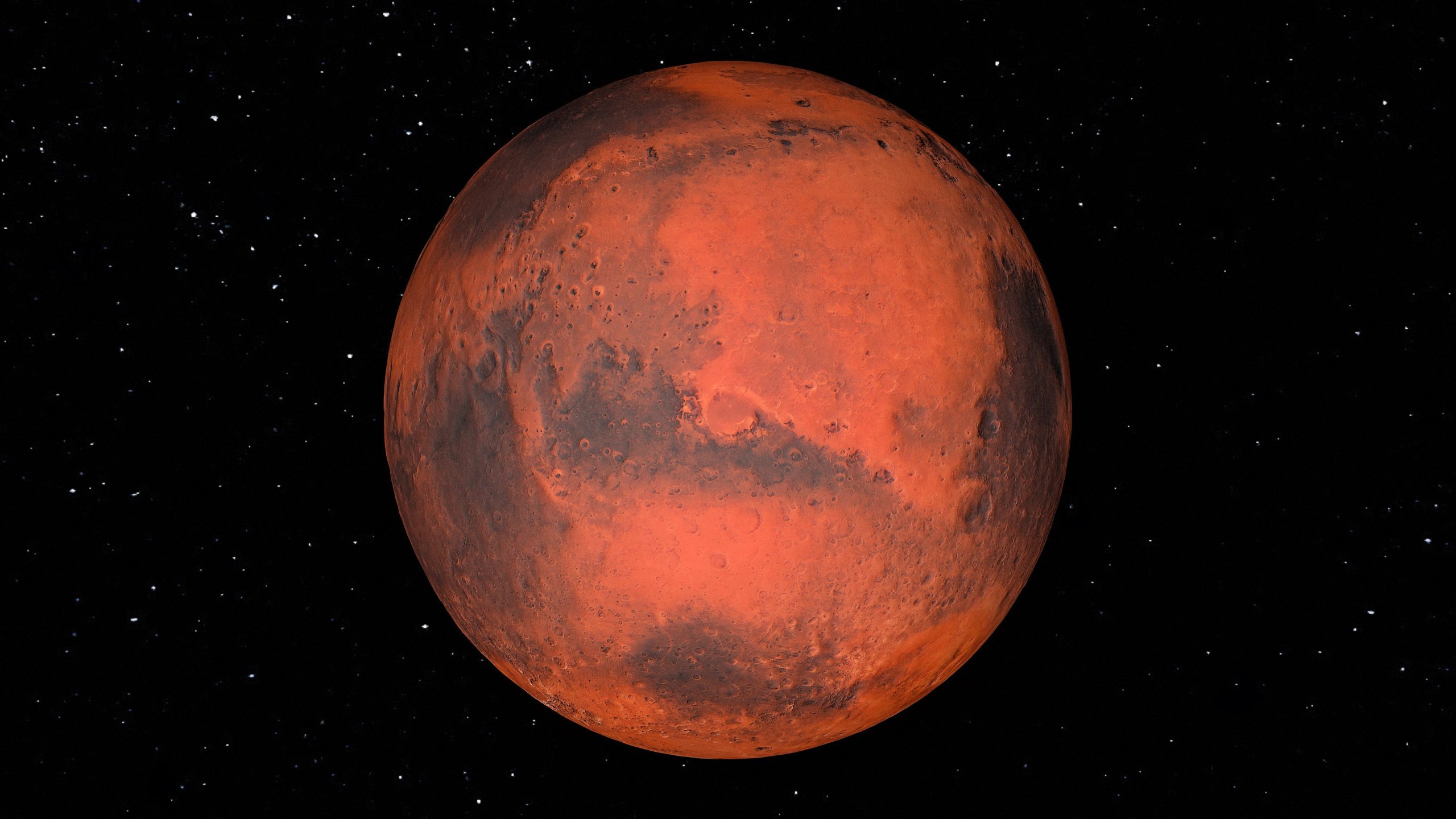Delving Into Mars: Five Unforgettable Facts About Our Neighboring Planet

When it comes to our solar system‘s enigmatic neighbours, Mars stands out as a planet of intriguing mysteries and possibilities. Known as the Red Planet due to its reddish appearance, Mars has been a focal point of human curiosity and scientific research for centuries.
As Earth’s closest planetary neighbour, Mars holds a unique position in our quest for knowledge, offering tantalising clues about the past, present, and potential future of our own planet. It has captivated the imagination of astronomers, scientists, and dreamers alike.
But what makes Mars truly fascinating? From its towering volcanoes and vast canyons to the evidence of water that hints at the potential for life, Mars continues to surprise and challenge us in our exploration of the cosmos. Join us as we delve into five unforgettable facts about this remarkable planet, shedding light on what makes Mars such an extraordinary destination in the vast expanse of space.
Fact 1: Mars Has the Tallest Volcano in the Solar System
Standing as a colossal giant on the Martian landscape, Olympus Mons is the tallest volcano known in our solar system, reaching an astonishing height of 13.6 miles (22 kilometers) and spreading across an area roughly the size of the state of Arizona. This shield volcano dwarfs Earth’s tallest volcano, Mauna Kea in Hawaii, which, measured from its oceanic base, reaches a height of about 6.2 miles (10 kilometers).
The sheer scale of Olympus Mons is a testament to the unique volcanic activity on Mars, characterized by lower gravity and a lack of tectonic plate movements. Unlike Earth, where shifting plates often curtail the growth of volcanoes, the stationary nature of Mars’ crust has allowed Olympus Mons to grow unabated over millions of years.
This extraordinary landmark not only highlights the dynamic geological past of Mars but also serves as a key target for scientific investigation, offering clues about the planet’s volcanic history and its potential for sustaining life.
Fact 2: Mars Hosts a Grand Canyon to Rival Earth’s
Stretching across the Martian surface, Valles Marineris is a breathtaking canyon system that dwarfs its earthly counterpart, the Grand Canyon. This colossal rift measures over 2,500 miles (4,000 kilometers) in length, nearly ten times the length of the Grand Canyon, and plunges to depths of up to 7 miles (11 kilometers).
Valles Marineris was likely formed through a combination of tectonic activity and erosional processes, although its precise origins remain a subject of scientific investigation. One prevailing theory proposes that the canyon was created by the cracking of Mars’ crust as it cooled early in the planet’s history, which was then further widened by erosional forces possibly driven by wind and flowing water.
This geological marvel not only showcases the dynamic and tumultuous history of Mars but also offers a window into the planet’s past environmental conditions, sparking curiosity about its potential to have once supported life.
Fact 3: Evidence of Water on Mars
The discovery of water on Mars has revolutionised our understanding of the Red Planet and profoundly shaped our theories about its potential to harbour life. Historically, the notion of water on Mars was speculative until the late 20th and early 21st centuries, when spacecraft missions uncovered compelling evidence.
The Viking missions of the 1970s, followed by the Mars Odyssey and Mars Reconnaissance Orbiter missions, revealed extensive signs of water-bearing minerals and river valley networks, suggesting that liquid water once flowed on Mars’ surface.
In recent years, current evidence of water on Mars has been bolstered by discoveries of subsurface ice deposits and recurring slope lineae that hint at the presence of liquid brine. These findings are not merely academic; they hold significant implications for the prospect of life on Mars and the feasibility of human colonization.
The presence of water, even in frozen form, is a critical resource that could support human missions, providing a potential supply for drinking water, agricultural use, and the production of hydrogen fuel. Moreover, where there is water, there may be life, making the search for microbial life on Mars one of the most exciting frontiers in planetary science.
Fact 4: The Mysterious Martian Moons
Orbiting the Red Planet are two enigmatic moons, Phobos and Deimos, named after the Greek mythological figures representing fear and dread. These moons, although small compared to Earth‘s moon, hold significant intrigue for scientists and astronomers alike.
The origins of Phobos and Deimos have sparked various theories. One prevailing hypothesis suggests that they are captured asteroids from the nearby asteroid belt, heaving been gravitationally ensnared by Mars. Another theory posits that they could be remnants from a collision in Mars’ early history, which resulted in debris that eventually coalesced into these moons.
Phobos, the larger of the two, orbits Mars at an astonishingly close distance, while Deimos follows a more distant path. Intriguing characteristics include the distinctive grooves on Phobos, possibly resulting from stress during its gradual spiraling towards Mars, and the smoother, dusty surface of Deimos.
Observational data collected from missions such as NASA’s Mars Global Surveyor and the ESA’s Mars Express have provided crucial insights into these moons’ topography, composition, and surface features. Despite their diminutive size, Phobos and Deimos serve as windows into the complex history and dynamic processes of our solar system.
Fact 5: Mars’ Extreme Climate and Weather
The climate on Mars is one of stark extremes, influenced heavily by its thin atmosphere composed primarily of carbon dioxide, with trace amounts of other gases like nitrogen and argon. This tenuous atmosphere, less than 1% as dense as Earth’s, contributes to the planet’s harsh and variable weather conditions.
Among the most dramatic meteorological phenomena on Mars are its colossal dust storms, which can envelope the entire planet for weeks at a time, significantly impacting surface operations and exploration missions. These storms reduce sunlight, affecting solar-powered instruments and rovers, and can alter the Martian landscape through intense erosion.
Temperature fluctuations on Mars are also extreme, swinging from an average of about -80 degrees Fahrenheit (-60 degrees Celsius) to highs of 70 degrees Fahrenheit (20 degrees Celsius) in equatorial regions during the day, and plummeting to -195 degrees Fahrenheit (-125 degrees Celsius) at night.
These severe cold temperatures pose significant challenges for both robotic and future human missions, necessitating advanced thermal control systems and durable materials to ensure the functionality and safety of equipment and humans alike.
Understanding and adapting to Mars’ harsh climate is crucial for the success of ongoing and future exploration endeavors, as it impacts everything from landing site selection to the design of habitats and mobility systems.
Conclusion
In this exploration of Mars, we’ve unveiled five unforgettable facts that highlight the Red Planet’s intriguing characteristics and pivotal role in our quest to understand the solar system. We delved into the grandeur of Valles Marineris, a colossal canyon system that dwarfs the Grand Canyon, reflecting Mars’ dynamic geological history.
We explored the compelling evidence of water on Mars, which not only reshapes our theories about the planet’s potential to harbour life but also holds practical implications for future human missions. We examined the enigmatic moons Phobos and Deimos, whose origins and distinct characteristics continue to spark scientific curiosity.
We studied Mars’ extreme climate and weather patterns, including its planet-encircling dust storms and drastic temperature fluctuations, both of which present formidable challenges for exploration. Lastly, we marveled at the planet’s towering volcanoes and deep canyons, which testify to Mars’ volcanic activity and tectonic movements.
Mars stands as a beacon of wonder and possibility in our solar system. Its diverse terrain and striking features provide invaluable clues about past environmental conditions, strengthening our understanding of planetary processes and the potential for life beyond Earth.
As we forge ahead with advanced missions, like NASA’s Perseverance rover and the upcoming human spaceflights planned by agencies and private entities alike, Mars remains at the forefront of our extraterrestrial aspirations. The dream of human colonization, driven by the availability of essential resources like water, inspires innovations in technology and sustainability.
Future prospects for Mars exploration are as vast and promising as the planet’s horizon. Whether through robotic missions, manned expeditions, or even the establishment of permanent colonies, our neighbor Mars offers endless opportunities for discovery, survival, and perhaps, a second home for humanity. As we continue to push the boundaries of space exploration, Mars will undoubtedly remain a cornerstone in our enduring quest to unlock the mysteries of the cosmos.
Embarking on our journey through Mars, we hope you found these five unforgettable facts about our neighboring planet as enthralling as we did. From towering volcanoes and expansive canyons to tantalizing evidence of water, each discovery brings us closer to unravelling the mysteries of the Red Planet. But the adventure doesn’t stop here. The exploration of Mars is a continually evolving field, with new findings emerging regularly.
To stay updated on the latest Mars discoveries, we encourage you to follow missions and updates from NASA, the European Space Agency (ESA), and other space organizations. Keep an eye on missions like NASA’s Perseverance rover, which continues to deliver groundbreaking insights into Mars’ geology and potential for past life. Joining online space enthusiast communities is another excellent way to engage with like-minded individuals, share knowledge, and participate in discussions about space exploration.
Consider becoming a member of space advocacy groups or supporting initiatives that promote space research and exploration. By staying informed and involved, you contribute to the next chapter of our interplanetary journey, bringing humanity ever closer to Mars. Let’s continue delving into the wonders of our solar system together – who knows what incredible discoveries await us just over the horizon?




